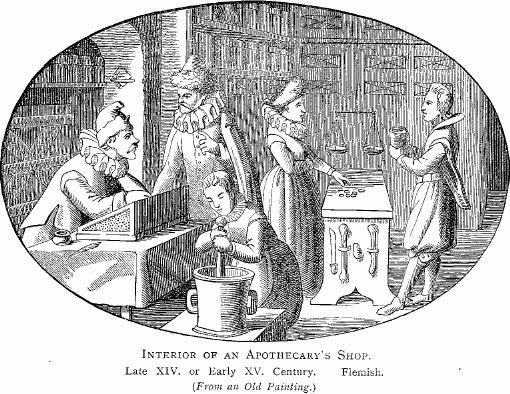Advertisement
This page describes the role of the apothecary in colonial America.
Interesting Medicinal MethodsColonial apothecaries were what we think of as doctors. They treated patients, made and prescribed medicines, made house calls, and taught apprentices. Some even performed surgeries - and remember most surgeries occurred at the time without anesthesia. Even in the 1600s and 1700s, apothecaries were sophisticated in their knowledge of remedies. For example, they knew that calamine could be used to treat itchy skin problems and that heartburn could be cured with chalk (similar to modern-day Tums). Apothecaries often used leeches to "bleed" people and chinchona bark to treat fevers. Some Apothecaries crafted their own remedies from any number of substances, herbs, animal parts, and other mixtures. Apothecaries also sold other items such as anchovies, toothbrushes, and tobacco. Focus on Symptoms Rather Than CausesApothecaries, and the practice of medicine in general in the 18th century, focused on the symptoms of disease rather than the causes of the disease. The major medical problems of the time were not cancer, diabetes, or heart disease, but rather smallpox and malaria. Apothecaries learned to treat patients and make medicines through an apprenticeship. Few apothecaries actually attended medical school. 13 Colonies Artisans and Trades Articles and Activities
13 Colonies Artisans and Trades |
Related activities
Advertisement


